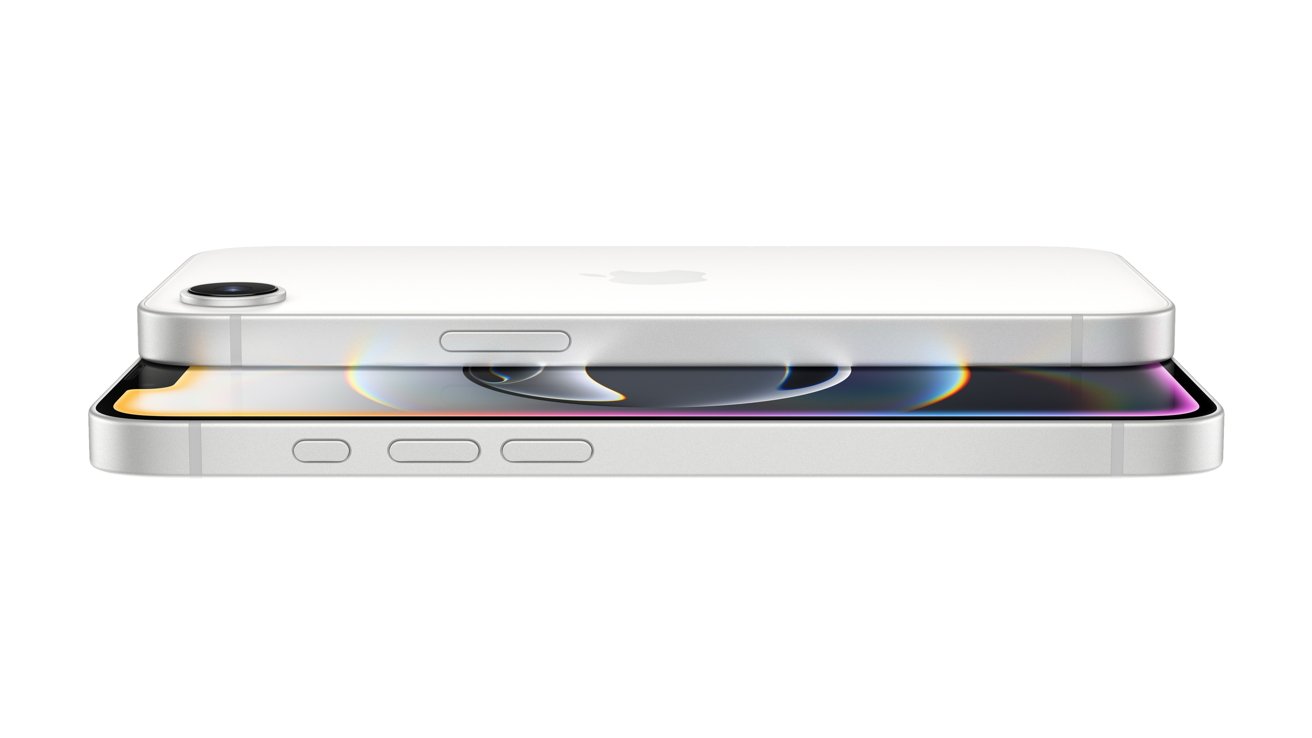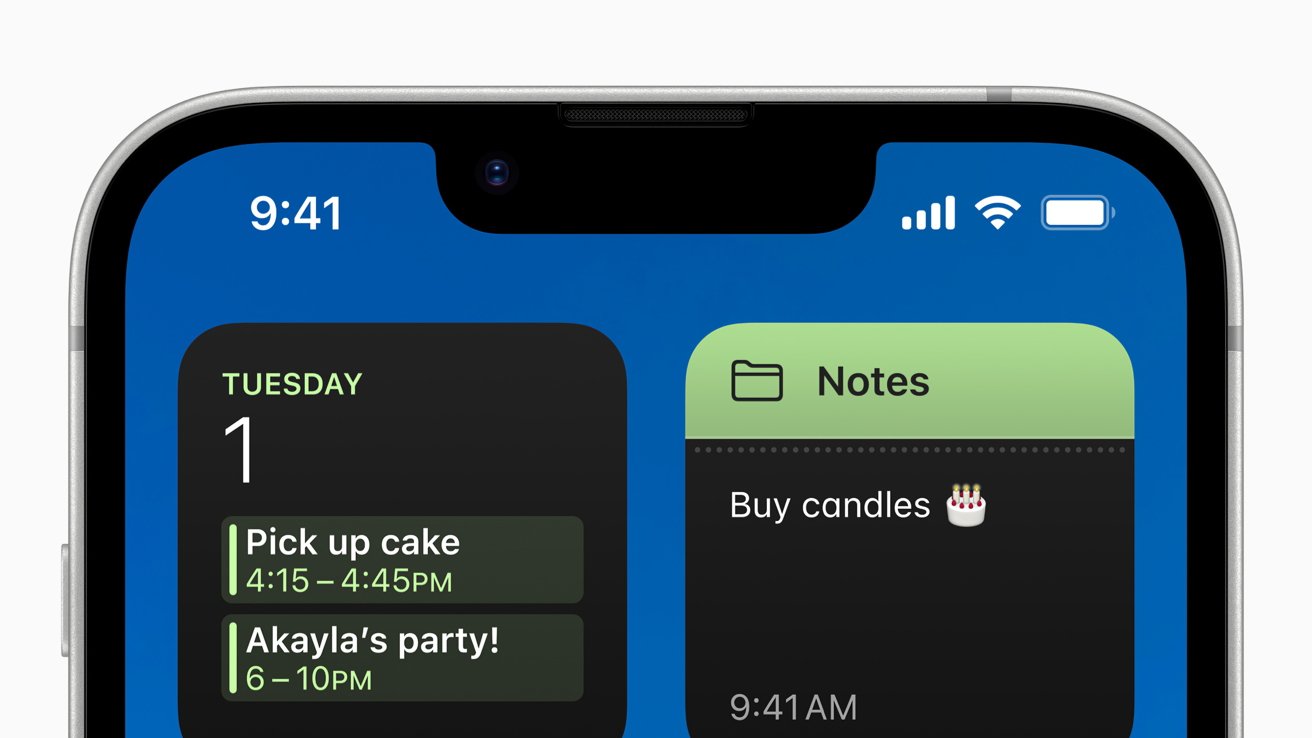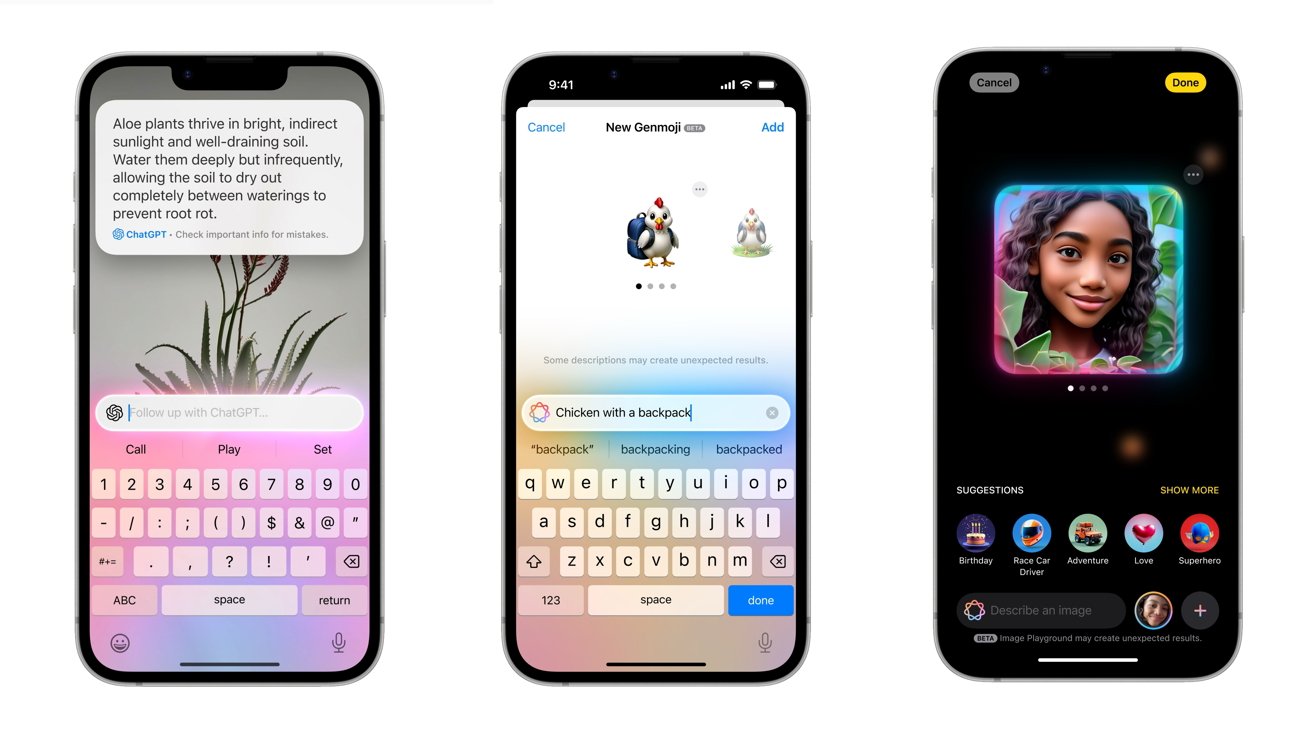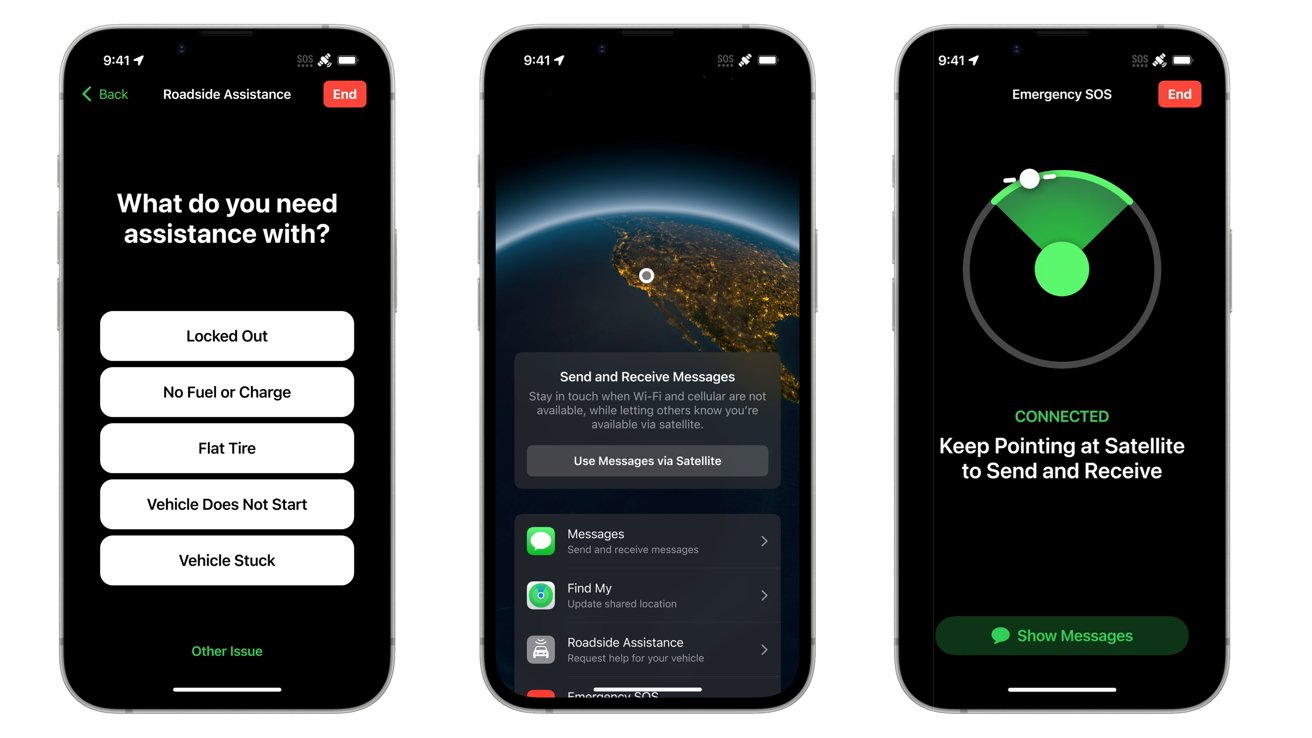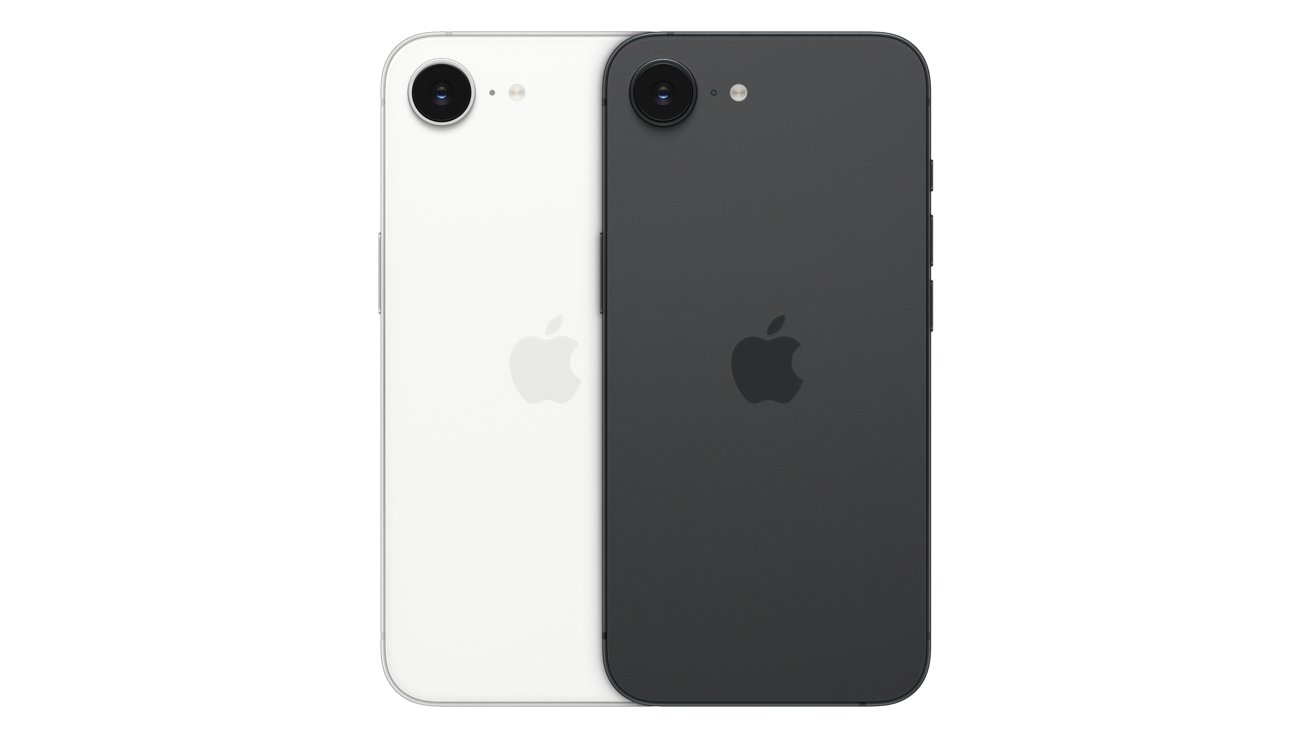Apple’s update to the iPhone SE adds a new design and Apple Intelligence, as well as a new name: iPhone 16e. Here’s how it compares to yesterday’s budget option — the iPhone 16.
Arriving just shy of three years after the third-generation iPhone SE, the newly-rebranded iPhone 16e has arrived as the new entry-level model for consumers. This is a major modernization effort, with a new design and a considerable specifications bump to match modern smartphones.
With the introduction of a new low-cost smartphone on Apple’s roster, this leaves consumers wondering if they should get it instead of the slightly more expensive iPhone 16.
Here’s how the two smartphone stablemates match up on paper.
iPhone 16e vs iPhone 16 – Specifications
| Specifications | iPhone 16e | iPhone 16 |
|---|---|---|
| Price (starting) | $599 Best iPhone 16e prices |
$799 Best iPhone 16 prices |
| Dimensions (inches) | 5.78 x 2.82 x 0.31 | 5.81 x 2.82 x 0.31 |
| Weight (ounces) | 5.88 | 6 |
| Side controls | Action Button | Action Button, Camera Control |
| Processor | A18 4-core GPU |
A18 5-core GPU |
| Storage | 128GB, 256GB, 512GB | 128GB, 256GB, 512GB |
| Display type | 6.1-inch Super Retina XDR | 6.1-inch Super Retina XDR |
| Resolution | 2,532 x 1,170 at 460ppi | 2,556 x 1,179 at 460ppi |
| True Tone | Yes | Yes |
| Biometrics | Face ID | Face ID |
| Connectivity | 5G (Sub-6GHz only), Gigabit-class LTE, Wi-Fi 6, Bluetooth 5.3, NFC Emergency SOS via Satellite, Roadside Assistance via Satellite, USB-C (USB 2) |
5G (Sub-6GHz and mmWave), Gigabit-class LTE, Wi-Fi 7, Bluetooth 5.3, Second-gen Ultra Wideband NFC Emergency SOS via Satellite, Roadside Assistance via Satellite, USB-C (USB 2), Thread support |
| Rear Cameras | 48MP Fusion | 48MP Fusion, 12MP Ultra Wide with Macro |
| Video | 4K 60fps, 4K 60fps HDR with Dolby Vision, 1080p 240fps Slo-Mo, Optical image stabilization, |
4K 60fps, 4K 60fps HDR with Dolby Vision, 1080p 240fps Slo-Mo, Cinematic Mode, Spatial Video, Macro Video, Sensor-shift optical image stabilization, Action Mode |
| Front Camera | 12MP TrueDepth, Autofocus |
12MP TrueDepth, Autofocus |
| Battery Size (Video playback time) | Up to 26 hours | Up to 22 hours |
| Colors | Black, White |
Black, White, Teal, Pink, Ultramarine |
iPhone 16e vs iPhone 16 – Physical Dimensions
The incumbent iPhone 16 is a fairly decent-sized smartphone, measuring 5.81 inches long and 2.82 inches wide. At 0.31 inches thick, it’s thin enough, but not too thin for its overall footprint.
On the weight side, the iPhone 16 is six ounces dead, after shaving off a tiny amount of weight from the iPhone 15.
The iPhone 16e is a tiny bit smaller than the iPhone 16, shorter at 5.78 inches long but equalling the width and thickness at 2.82 inches and 0.31 inches respectively. It’s also a tiny bit lighter at 5.88 ounces.
When it comes to design, Apple used its standard glass sandwich approach in the iPhone 16, with a metal frame filling. Aerospace aluminum is used in the middle, while the front glass also benefits from Ceramic Shield protection for extra toughness.
This design is carried on through with the iPhone 16e, complete with Ceramic Shield at the front.
Around the back, Apple updated the iPhone 16’s camera bump, departing from the square bump in favor of a slimmer one, complete with a vertical alignment of the cameras.
The iPhone 16e doesn’t have a bump per se, but it does have one camera that sticks out from the back.
Button-wise, the iPhone 16 has the side button to wake the device, volume controls, an Action button, and the new addition, Camera Control. A capacitive button, it can be used like a conventional point-and-shoot control, while also allowing some extra controls by sliding your finger along it.
The iPhone 16e does get the Action button, side button, and volume controls, but it falls short in not having Camera Control.
Obviously, there’s a fair bit of a similarity here when it comes to size. While you may consider the old iPhone SE to typically be the smallest option in the range, the iPhone 16e is now pretty much toe-to-toe in physical presence to the flagship model.
iPhone 16e vs iPhone 16 – Display
The iPhone 16 has a familiar 6.1-inch OLED Super Retina XDR display. With a resolution of 2,556 by 1,179 pixels, it has a pixel density of 460ppi, which is quite standard for Apple’s main smartphones.
The iPhone 16e also has a 6.1-inch Super Retina XDR display, complete with OLED as well. However, it has a slightly smaller resolution of 2,532 by 1,170 pixels, while maintaining the 460ppi pixel density.
The OLED screen of the iPhone 16 also has a contrast ratio of 2,000,000:1. Brightness is 1,000 nits for SDR content, 1,600 nits peak for HDR, and up to 2,000 nits for outdoor usage.
The iPhone 16e retains the contrast ratio, but the brightness isn’t quite as high. The max brightness for typical usage is 800 nits, rising to 1,200 nits of peak brightness for HDR content.
The top of the iPhone 16 features the Dynamic Island, which combines smart UI elements and the hole in the display for the cameras to create software camouflage that’s a step up from the old and reviled notch.
Said notch is back, but on the iPhone 16e. Resting at the top, it doesn’t benefit from the UI camouflage of the Dynamic Island at all.
Rounding out the display spec lists, they both includes True Tone, Wide color (P3), Haptic Touch, and a fingerprint-resistant oleophobic coating.
Apple’s upgraded display for the iPhone 16e is a welcome addition versus the old-style iPhone SE. Even so, it still keeps the iPhone 16’s display a little bit better in terms of specifications.
iPhone 16e vs iPhone 16 – Cameras
The rear of the iPhone 16 has two cameras, in a bump half the physical size of the previous square version. Alongside the bump is the True Tone flash.
The first camera is the 48MP Fusion camera, formerly the “Main,” which has an f/1.6 aperture, sensor-shift optical image stabilization, and 100% Focus Pixels.
Its party piece is that it can also offer a virtual 2x Telephoto lens. This is simply performed by cropping into the 48MP image until you’re left with a 12MP version.
This is still an “optical” zoom as it’s not manipulating the image area. However, if you want, there’s a maximum 10x digital zoom range.
The other camera is a 12MP Ultra Wide version, complete with an f/2.4 aperture, offering an effective 2x zoom out, as well as a 120-degree field of view.
New for the iPhone 16 is a Macro mode, as well as a new anti-reflective lens coating.
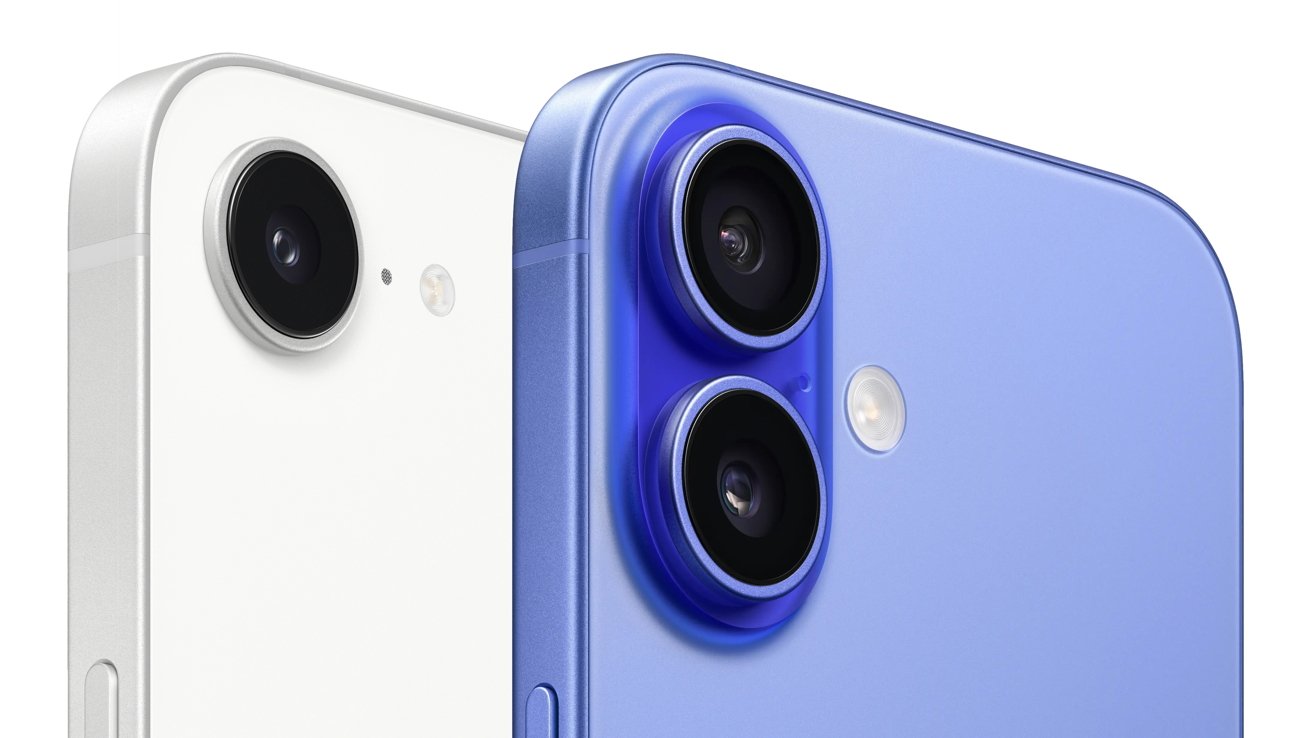
iPhone 16e vs iPhone 16: The iPhone 16e [left] has one camera but fakes a second. The iPhone 16 [right] has two cameras, but fakes a third.
The solitary rear camera on the iPhone 16e is a 48MP Fusion camera, with an f/1.6 aperture. This is mostly the same as the iPhone 16’s version, but there’s the more typical optical image stabilization in use, not the sensor-shift version.
It pulls off the same fake camera trick as the iPhone 16’s counterpart, complete with a 2x 12MP crop of the 48MP sensor.
As usual, there’s the full suite of computational photography tools for both models, including the Photonic Engine and Deep Fusion. There’s also Portrait mode with Portrait Lighting, Night Mode, 63MP panoramas, and upgraded Photographic Styles.
For stills, there is a difference in that the iPhone 16 is capable of macro photography and Spatial photos, whereas the iPhone 16e is not.
Video-wise, the iPhone 16 can deal with 4K 60fps Dolby Vision HDR, 4K 30fps cinematic video stabilization, Action mode at 2.8K 60fps, and 1080p 240fps Slo-mo. Other video features on the iPhone 16 include continuous autofocus, stereo recording, audio zoom, Spatial video Night Mode Time Lapse, and also Time-Lapse with stabilization.
The list for the iPhone 16e is oddly similar, with some exceptions. Apple left off Cinematic mode, Action mode, Spatial video, and Macro video recording capabilities.
The front camera of the iPhone 16 has a 12MP f/1.9 camera as part of the TrueDepth camera array. There’s support for computational photography with the Photonic Engine, Deep Fusion, Smart HDR 5, Portrait mode, Portrait Lighting, Photographic Styles, and Animoji and Memoji.
The front camera on the iPhone 16e is exactly the same. Except it’s in the notch, not the Dynamic Island.
For front camera video, both can record 4K 60Hz Dolby Vision and 120fps 1080p Slo-mo. While both do have cinematic video stabilization at up to 4K, only the iPhone 16 offers a cinematic mode at 4K 30 in Dolby Vision.
It’s safe to say that two cameras are better than one, and that there are more photography possibilities with the iPhone 16 versus the iPhone 16e. With the exception of a lack of an ultra wide camera and a few modes on the iPhone 16e, they’re pretty neck-and-neck on paper.
Then again, if photography is a significant feature to you, the Pro models may be a better option.
iPhone 16e vs iPhone 16 – Processing and Performance
The A18 in the iPhone 16 is a six-core CPU with two performance cores and four efficiency cores. It’s accompanied by a five-core GPU as well as a 16-core Neural Engine.
That Neural Engine was an upgrade, capable of running ML models twice as fast as the A16 Bionic, and able to run at up to 35 trillion operations per second.
For the iPhone 16e, Apple uses almost the same A18 chip. You still get the 16-core Neural Engine and the 6-core CPU, but the GPU is only a four-core version.
The main reason behind the iPhone 16e’s use of the A18 is Apple Intelligence, a feature that requires an A17 Pro at a minimum to function. With this choice, Apple now has a low-budget entry point for consumers to jump on the Apple Intelligence bandwagon and to use them in their lives.
At this stage, there are no options to determine how much of a performance difference there is between the two chips, but the difference is unlikely to be that great.
iPhone 16e vs iPhone 16 – Connectivity
The iPhone 16 has support for 5G connectivity in both sub-6GHz and mmWave bands, using a Qualcomm modem. As a backup, there’s Gigabit LTE with 4×4 MIMO and carrier aggregation.
For the iPhone 16e, Apple has shifted to using its own design of modem. The C1 is Apple’s first commercial attempt at the component, and the iPhone 16e is a trial before deciding if it’s worthwhile adding to other future products.
While brand new, it isn’t going to give iPhone 16 cellular speeds, as it only supports sub-6GHz 5G. Gigabit LTE is also present, as is UMTS/HSPA+ and GSM/EDGE.
Shifting to nearby connectivity, the iPhone 16 has Wi-Fi 7 support along with Bluetooth 5.3. There’s also Ultra Wideband, which can be used to track down lost AirTags and other iPhone 15 handsets.
The iPhone 16e steps down to Wi-Fi 6 support, which is still ample enough for most users, but maintains Bluetooth 5.3 and NFC. It does, however, miss out on Ultra Wideband and Thread, so Find My and HomeKit usage will not be as good as the iPhone 16.
Physical connectivity in the iPhone 16 is with USB-C, though Apple did decide to stick to USB 2.0 speeds, not newer standards. This means data transfers at up to 480Mbps, rather than up to 10Gbps.
Unsurprisingly, the iPhone 16e uses USB-C at the same USB 2.0 speeds.
The iPhone 16 has support for GPS, GLONASS, Galileo, QZSS, and BeiDou for navigational support, as well as a digital compass and iBeacon support. This is copied by the iPhone 16e.
Speaking of satellites, both the iPhone 16e and the iPhone 16 have Emergency SOS via Satellite as well as Roadside Assistance via Satellite.
iPhone 16e vs iPhone 16 – Power and Battery
Apple claims the iPhone 16 has a battery capacity allowing up to 22 hours of local video playback and up to 18 hours of streaming video playback. Audio playback can hit up to 80 hours.
When it comes to the iPhone 16e, Apple actually says it can do better in terms of battery usage. Local video is up to 26 hours, streamed video grows to 21 hours, and audio playback increases to 90 hours.
It’s not entirely clear why this is the case at this time, but it is probable that by downgrading or changing some internal components, a byproduct is reduced overall power consumption.
To recharge the iPhone 16 or iPhone 16e, you can do so via USB-C to take advantage of fast charging. A 50% charge is possible after about 30 minutes when using a 20W charger or higher.
Full wireless charging is available on the iPhone 16, with MagSafe working at up to 25W, with additional support for 15W Qi2 and 7.5W Qi.
There is wireless charging on the iPhone 16e, but it’s not MagSafe. Instead, there is Qi wireless support, limited to 7.5W.
iPhone 16e vs iPhone 16 – Other Features
The biometric security of the iPhone 16 is handled by Face ID, which uses the front TrueDepth camera array.
This is also the same for the iPhone 16e, which finally abandons the Touch ID of the iPhone SE for the face-based version.
For water and dust resistance, the iPhone 16 and iPhone 16e are rated at IP68. This means they can withstand being submerged at a depth of up to 6 meters (19.7 feet) for up to an hour.
iPhone 16e vs iPhone 16 – Capacity, Color, and Pricing
Apple launched the iPhone 16 in three capacities, with the 128GB at $799, 256GB for $899, and 512GB for $1,099.
The iPhone 16 launched in Black, White, Pink, Teal, and Ultramarine colorways.
The iPhone 16e is sold in the same three capacities, at $599 for 128GB, $699 for 256GB, and $899 for 512GB.
Color options for the iPhone 16e are a bit more limited, with a choice of either Black or White.
iPhone 16e vs iPhone 16 – Similar, but not
It’s fair to say that what was the iPhone SE line has been given a considerable glow-up. It’s been thoroughly modernized, to a degree that it stands pretty much side-by-side with the previous lowest-end model of the current flagship range.
You couldn’t say that about the old SE, which was always hanging behind the mainline group.
What we end up with is an iPhone 16 that’s been neutered in a few ways. The screen is ever so marginally smaller and less bright, and it has the notch instead of the more-preferred Dynamic Island.
The A18 chip is mostly on-par, but you get one less GPU core in the iPhone 16e instead of the version in the full-fat iPhone 16.
The single rear camera isn’t entirely that much of a downgrade, as you’re only really losing out on the ultra wide shots. That extra camera cropping trick is still present in the 16e.
Add in things like the wireless charging differences, Apple’s new non-mmWave modem, and no Ultra Wideband, and it’s a lot of small downgrades from the defacto iPhone 16 experience.
That said, it’s a $200 saving if you do accept those small changes. Unless you’re extremely picky about your smartphones, there’s a lot to like about the iPhone 16e.
It’s a discount iPhone 16, but more in price than in capability.
Where to buy Apple’s iPhone 16e and iPhone 16
Wireless carriers are offering aggressive incentives on the iPhone 16 ahead of 16e preorders going live, with prices starting at $0 per month for the device. You can find today’s best iPhone deals on the 16, 16 Pro and 16 Plus models at Verizon and AT&T below as we await promos for the new iPhone 16e.
- AT&T Wireless: Get an iPhone 16 on AT&T with qualifying trade
- Verizon Wireless: Get an iPhone 16 on Verizon with eligible trade
*Terms and conditions apply. Please see site for details.


